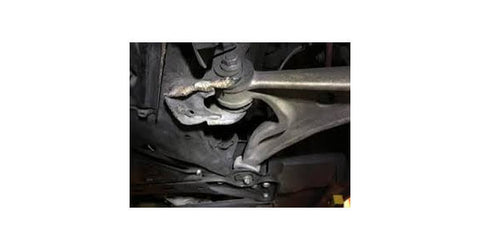The control arm connects the car frame and the front fixed wheels. It is an essential component of a motor vehicle suspension. The car will bob up and down when it hits a bump or a pothole. And car control arm allows the tires to move and is crucial for road safety. The control arms and bushings will eventually wear out for smooth engine operation. What happens when your lower control arm breaks? Is it safe to drive?
What happens when a control arm breaks?

Control arms are part of the suspension system and help the wheels follow the contours on the road. It makes rides more comfortable. It also helps distribute the car's weight and reduce road bump shocks. You will usually experience the following when you drive a broken lower control arm:
1. Popping sound
Have you ever heard the sound of a car bouncing on bumps? You might also hear the sound when you speed up or slow down. A broken control arm on the car could cause the sound. A loose or overly worn bushing or ball joint might also cause. The "broken control arms" are not likely to break but can be bent by heavy road debris impact. They can knock when the car is accelerating or decelerating and whenever it hits a pothole.
2. Unstable Steering
Wearing bushings, ball joints, and a broken control arm on the car can cause suspension parts to misalign. This can cause issues in steering and handling. This problem is more apparent when you brake or drive on uneven terrain. Check your car immediately if you notice any sudden changes in how it handles and operates.
3. Driving performance
What happens when a control arm breaks? The control arm bushings absorb the shocks of bumps. The car will constantly vibrate if it isn't working correctly or if there are broken control arms. The control arm's metal sleeves will rattle, making an annoying clunking sound from the front wheels.
4. Uneven Tire Wear
If the control arm is broken while driving, uneven wear will occur to the tire tread. The component's primary function is to allow the tire to move freely. If this doesn't happen, the uneven wear will result.

These symptoms can be challenging to spot, especially if you don't have much knowledge about auto mechanics. A mechanic should inspect your car at least once per year to identify potential problems that might otherwise go unnoticed. It is vital to adhere to the maintenance schedule.








